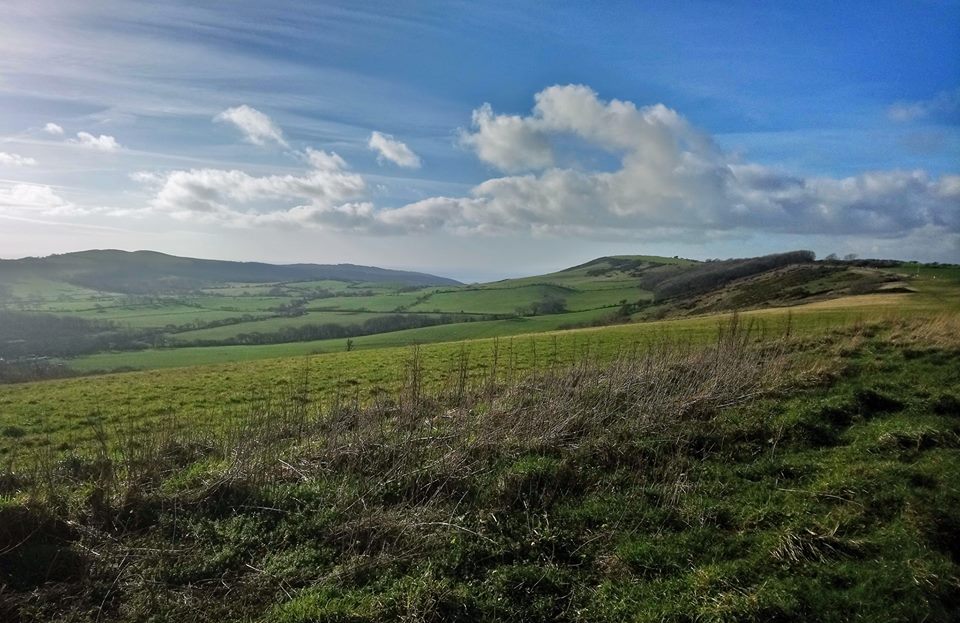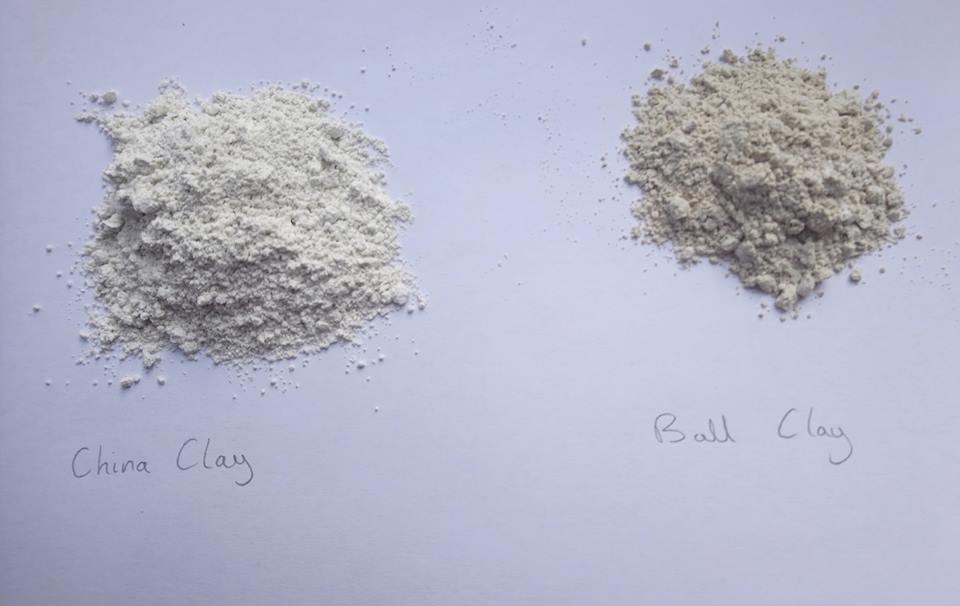|
Yesterday I had a very interesting conversation with a Geologist on the effects of geology on clay and raw materials used in glazes. I went home and did some further research on one part of our conversation linked to Dorset and I thought it might interest you. Whats the difference between China Clay and Ball Clay and why have we got Ball Clay in Dorset?China Clay (Kaolin) is formed by the decomposition of minerals particularly Feldspar which is the main ingredient in a rock called Granite. This is not a quick process and it happened millions of years ago between the late Cretaceous and early Paleogene periods. I had not heard of the Paleogene period, according to the National Geographic website it follows the Cretaceous period. Dinosaurs had gone and mammals were becoming more diverse. China Clay is found in Cornwall and parts of Devon. China Clay is only found in a small amount of places across the world. One County along in Dorset we do not have China Clay we have a very good quality Ball Clay. Why? Now it gets interesting and I am sorry but I am going to get a bit more technical. Ball Clay is a Kaolin that has been transported by water from its primary decomposed rock, which is usually Granite. So to put it simply the China Clay was created millions of years ago in Cornwall and Devon then vast rivers picked some up and carried it into Dorset. When this happened the Kaolin picked up impurities and was ground down on it's travels into smaller particles. This Kaolin on the move settled in Dorset and became Ball Clay. Ball Clay mainly consists of Kaolinite, Mica and Quartz. It has a higher plasticity to China Clay due to the ground down smaller particles. It contains a larger amounts of Silica and still has a whitish colour when fired. The majority of Ball Clay in Dorset can be found on the Isle of Purbeck, the Wareham Basin. Evidence of the mining of the Ball Clay can be seen at the Blue Pool tourist attraction. In ceramics both China Clay and Ball Clay are used as ingredients to make clay bodies, but they are very different ingredients. Ball Clay has a very high plasticity and excessive shrinkage. It is used to make clay easier to work with, giving the clay body it's plasticity. China Clay is used for it's whiteness and purity, but it has very poor plasticity making it difficult to work with. China Clay is well known for it's use in Bone China and Porcelain. This whole research came about from a conversation discussing the fact that clays and glazes can be effected by a broad range of things from the type of wood that is used in a kiln firing and the rates of temperature change in a firing to the particular place a raw material was dug from. What happened to a raw material in the millions of years before it was dug and refined can have a huge effect on how it reacts in a glaze. A prime example of this was listening to Kate Malone at Ceramic Art London talk about her Saville Row project. Enough materials to mix the glaze for the whole project had to be purchased in one go as the whole glaze would change if one of the ingredients was dug from somewhere else in the world to the original glaze test ingredients. Savile Row is an amazing architectural and ceramic project, more information can be found here. I have tried to write this as simply as possible so you can gain a basic understanding . If you found this interesting and would like to explore this further you may like to visit Purbeck Mineral and Mining Museum at Norden, Dorset (please check opening hours) or visit Blue Pool. It has a small museum showing early history of clay mining in Dorset and the pool is set in a deep clay bowl. If you would like to travel further afield I recommend visiting Wheal Martyn Clay Works at St Austell. It is an interactive museum including a fully preserved Victorian China Clay works. If you would like to find out more about the geology in the South West I recommend having a chat with one of the members of the Jurassic Coast Trust. They have a wealth of Knowledge and information. For history on Dorset Potteries and clay mining do visit the Dorset History Centre. They even have Poole Pottery glaze recipe books! I enclose links to all these at the bottom of this blog.
Finally while researching this I found a snippet of local clay history about Brownsea Island Clay on the National Trust website. In the 19th Century Colonel Waugh bought Brownsea Island and thought they had discovered a high quality of Ball clay similar to that at Furzebrook. A three storey pottery and a tramway to transport the clay from the pit was built. Unfortunately the Ball Clay was a poor quality and only suitable for making sanitary ware. It just shows that Kaolin moving only slightly further from where the ball clay is mined in Dorset can have a huge effect on the properties and qualities of the material. Clay, isn't it fantastic. It can make something functional or sculptural, tell a story of past civilisations through Archaeology, link in with geology showing what can happen over millions of years, show chemical reactions through glazes and be good for our well being!
6 Comments
30/3/2019 10:19:58
The clay and mineral are the elements which are found from hilly areas and mountain ranges where tey can get and purified for the further use. The news about the china clay, ball clay which is extracted by the help of geologist and the pictures are attached.
Reply
28/7/2019 14:15:04
This is a very informative content! When I first got interested in pottery, all I knew was in pottery, you can use all the types of clay. It is only now when I became aware with the different types of clay and their specific components and use. I now believe that it is very important to know these kind of important details because these will surely help us to create a better pottery craft in the future. I am an aspiring pot maker, and I surely believe that this is a great thing to know to improve my skills. I just hope others would also see this for them to be knowledgeable as well.
Reply
5/1/2022 06:39:53
Great informational post. Thanks. Keep posting such great articles.
Reply
11/2/2022 07:55:10
Clay and mineral are elements that are found in hilly places and mountain ranges, where they may be cleansed for future use. The news concerning china clay and ball clay, which is retrieved with the aid of geologists, is included, as well as photographs.
Reply
28/5/2022 17:11:01
So similar yet so different! Very detailed observation.
Reply
Leave a Reply. |
Deborah ClarkeCommunity ceramicist. Passionate for the Arts to be accessible for everyone. Supportive of local businesses. Archives
January 2024
Categories |


 RSS Feed
RSS Feed